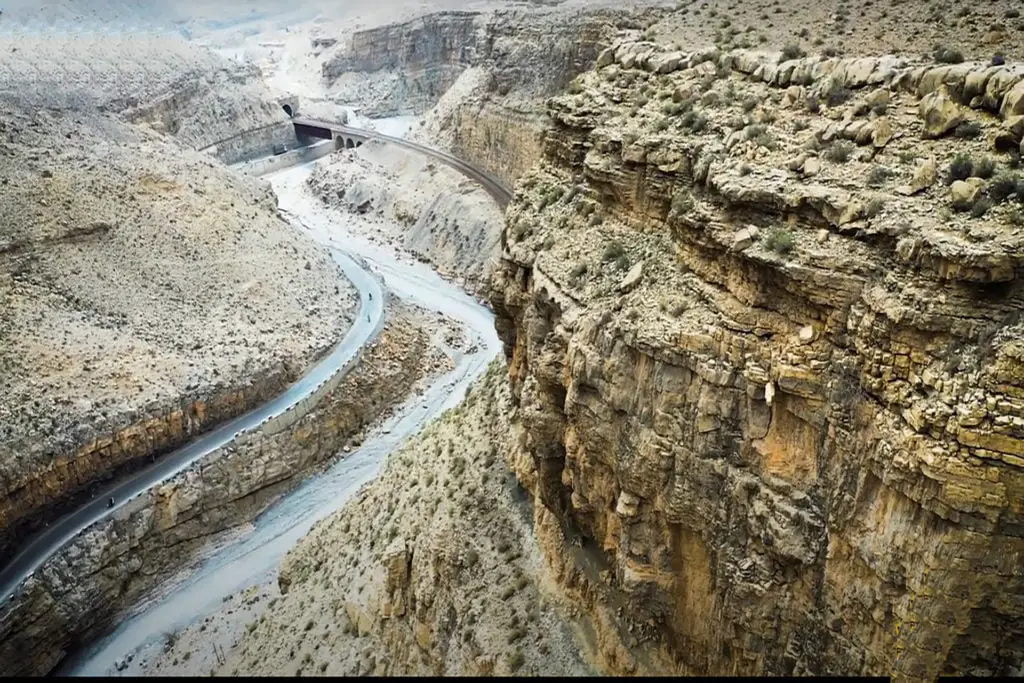Hazarganji Chiltan National Park is a national park in the Mastung district of the western Balochistan province of Pakistan. It lies between Chiltan to its west and Hazarganj to its east. The park was established in 1980 to provide habitat for the rare Chiltan ibex found in the area.
Hazarganji Chiltan National Park Area
Hazarganji Chiltan National Park was established in 1980 and covers 325,000 acres of land located near the Koh-i-Chiltan mountain on the outskirts of Quetta.
Hazarganji Park Quetta Location
The park is located in the Sulaiman Mountains with desert and forest habitats, about 20 kilometers (12 mi) southwest of the city of Quetta.
Hazarganji Chiltan National Park is another beautiful national park in Pakistan. The area is mountainous with steep slopes divided by ravines. The Chiltan Hills and the Hazar Ganji Range lie west and east of the north-south Chiltan divide. It is easily accessible from the provincial capital of Quetta and attracts many visitors. Amenities include a museum, picnic areas, and lodging at roadhouses.
Hazarganji National Park History
Hazarganji Chiltan National Park was primarily established to offer protection and refuge to the endangered Chiltan wild goat, also known as Markhor. In the 1950s, the population of these goats was reported to be over 1,200, but by November 1970, it had dwindled to approximately 200, based on a count of 107 individuals. Presently, the total population of the Chiltan wild goat is estimated to be around 800.
The northern part of the Chiltan range is home to the Suleimanian Markhor, and there are still a few urials surviving on the western slopes at elevations ranging from 1,500 to 2,100 meters. Carnivorous species found in the park include the striped hyena and the red fox.
Meaning of Hazarganji
The name comes from the path between the mountains called “Hazarganji” which means (of a thousand treasures) in the native language, as it was a historical passage for Greco-Bactrian, Mongols, Scythians, and migrating hordes of Baloch tribes.
Chiltan National Park Wildlife
The biodiversity of Hazarganji Chiltan National Park in Quetta encompasses a variety of wildlife. This includes 30 species of mammals, comprising 9 large mammals and 21 small mammals, as well as 120 species of avifauna, with 36 resident species and 84 migratory ones. Additionally, the park is home to 30 species of reptiles.
The park’s forested areas feature a range of tree species such as Pashtun juniper (Juniperus macropoda), pistachios, almonds, and ash trees.
Notable fauna within the park boundaries consists of approximately 300-400 rare Sulaiman Markhor and around 800 Chiltan Ibex. Some urials can still be found on the western slopes at elevations between 1,500 and 2,100 meters. Other wildlife include the Indian wolf, striped hyena, Baluch leopard, Caracal, common jackal, and Indian porcupine.
The avian life in the park is diverse, with species like the very rare Houbara bustard, griffon vulture, Egyptian vulture, crested buzzard (during the winter), late falcon, peregrine falcon, common kestrel, common grebe (winter only), Indian kestrel, Indian cuckoo, European bee-eater (breeding only), ruffed grouse, European nightjar (breeding/summer only), long-billed warbler, eastern warbler, variable thrush, blue rocker, white-headed warbler, Liechtenstein’s desert finch, and various reptiles.
The reptilian residents of the park include monitor lizards, Russell’s viper, saw viper, and spiny-tailed lizards.
A total of 30 species of mammals exist in Hazarganji Chiltan National Park:
| Mammal | Scientific name | Presence |
|---|---|---|
| Afghan hedgehog | Hemiechinus auritus megalotis | Chiltan, Hazarganji, Kharkhasa |
| Brandt’s hedgehog | Paraechinus hypomelas | Hazarganji, Kharkhasa |
| Balochistan short-tailed shrew | Crocidura gmelini | Chiltan, Hazarganji, Kharkhasa |
| Zarudny’s rock shrew | Crocidura zarudnyi | Hazarganji, Kharkhasa |
| Greater horseshoe bat | Rhinolophus ferrumequinum | Hazarganji |
| Indian wolf | Canis lupus pallipes | Chiltan, Hazarganji |
| Asiatic jackal | Canis aureus | Chiltan, Hazarganji, Kharkhasa |
| Red fox | Vulpes vulpes | Bibi Nala, Chiltan, Duzchur, Hazarganji, Hinjeeri Nala, Ziarat Nala |
| Caracal | Caracal caracal | Chiltan, Hazarganji, Kharkhasa |
| Jungle cat | Felis chaus | Chiltan, Hazarganji, Hazarganji Reserve forest, Kharkhasa |
| Beech marten | Martes foina | Chiltan, Hazarganji, Hazarganji Reserve forest, Kharkhasa |
| Marbled polecat | Vormela peregusna | Hazarganji, Kharkhasa |
| Striped hyena | Hyaena hyaena | Chiltan, Hazarganji, Kharkhasa |
| Chiltan ibex | Capra aegagrus chialtanensis | All over the park |
| Cape hare | Lepus capensis | Bibi Nala, Hazarganji, Ziarat Nala |
| Afghan pika | Ochotona rufescens | Hazarganji Reserve forest |
| Grey dwarf hamster | Cricetulus migratorius | Chiltan, Hazarganji |
| Baluchi mouse-like hamster | Calomyscus baluchi | Chiltan, Hazarganji, Kharkhasa |
| Small five-toed jerboa | Allactaga elater | Chiltan Hills, Hazarganji |
| Forest dormouse | Dryomys nitedula | Chiltan Reserve forest, Hazarganji, Kharkhasa |
| Indian crested porcupine | Hystrix indica | Chiltan, Hazarganji (1,800–2,500m) |
| Sundevall’s jird | Meriones crassus | Chiltan, Hazarganji |
| Persian jird | Meriones persicus | Chiltan, Hazarganji |
| Libyan jird | Meriones libycus | Chiltan, Hazarganji |
| Southern mole vole | Ellobius fuscocapillus | Chiltan, Hazargani (1,900–2,400m) |
| Brown spiny mouse | Mus saxicola | Chiltan, Hazarganji |
| Black rat | Rattus rattus | Museum and rest-house |
| Sand-colored soft-furred rat | Millardia gleadowi | Hazarganji |
| House mouse | Mus musculus | Chiltan, Hazarganji |
| Indian bandicoot rat | Nesokia indica | Bibi Nala, Hazarganji, Hinjeeri Nala, Ziarat Nala |
Chiltan Express Train
This train had a Quetta-Lahore route via Dera Ghazi Khan and Kot Adu Jn. This route opened in 1973 and therefore the Chiltan Express probably started operating in that year or later. Over the years, the Chiltan Express route has changed many times, running between Quetta and Peshawar via Faisalabad, between Quetta and Rawalpindi via Lahore, and now between Quetta and Lahore via Faisalabad.







